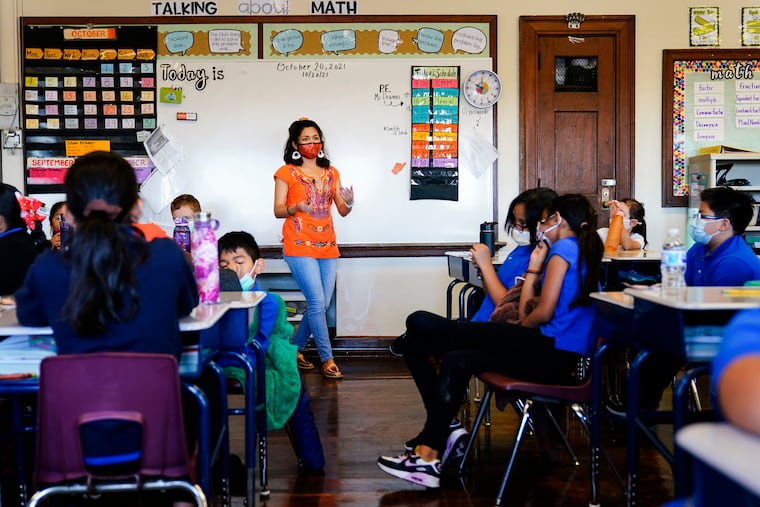Teachers are quitting in droves. Here’s how to stem the staffing crisis in schools. | Opinion
We could try to meet their needs, compensate them fairly, and make their jobs workable. We could trust their professional judgment and do away with rigid curricula and ineffective standardized tests.

We are at yet another crisis point in American education. After a year and a half of COVID-19 disruptions to our schools, the already high rates of teacher attrition are getting higher. Before the pandemic, almost half of new teachers left before their fifth year. Now the problem is becoming even worse.
Staffing shortages are becoming a daily fact of life for districts across the nation. The School District of Philadelphia reported a 200% increase in teacher resignations from December to mid-February when compared with the same period from the 2020-21 school year.
I’ve spent the last five years preparing students to be classroom teachers and learning from teachers who decide to leave. Based on what I’ve heard from novice teachers going into the profession and from the teachers on their way out, this problem is going to continue to get worse.
Like most crisis moments, this one offers a choice. We can do what we’ve always done when we have a teacher shortage: namely, lower the barriers of entry so we can fill the spots with less-qualified applicants. Or, we could think about addressing the fundamental issues that have been making teachers leave the classroom at high rates for the last several decades.
My research in this field has shown that teachers leave when they feel they aren’t trusted as professionals and are prevented from doing their job well.
The former teachers I’ve written about all entered the profession committed to teaching. Most thought it would be their life’s work. But they described year after year of barriers that prevented them from doing the job they signed up for: overfull classes, constant administrative turnover, curriculum mandates that interfered with good teaching, and standardized exams that took over the curriculum.
One former teacher from the Philly suburbs told me that after years of such challenges, “that fire you have for teaching just kind of dries up.”
And that was before COVID-19 transformed schools across the country. Most temporarily moved to some kind of online or hybrid teaching. Parents everywhere became unpaid teachers’ assistants to help keep their kids learning.
This presented what we educators call a “teachable moment.” The early days of the pandemic were an opportunity for all of us to learn about the teaching profession up close.
We could have recognized just how hard it is to be a teacher. We could have seen the difficulty of keeping children constantly engaged, providing consistently challenging work, and offering meaningful feedback. We could have acknowledged that we ask teachers to not only promote our children’s academic performance, but also to be social workers, counselors, therapists, anger-management coaches, dispute mediators, entertainers, and babysitters.
“Instead of lowering our standards to attract new people to the job, we could try to win back those who were committed but are now gone.”
We could have then insisted that conditions change for teachers — that we reduce student loads and workloads in order to make the job sustainable.
But we have done none of these things. Instead, we’ve demanded that teachers return as quickly as possible to school while making token gestures toward protecting them — most schools lacked personal protective equipment, had outdated ventilation systems, and were too crowded for social distancing.
Then, we demanded that teachers work both online and in person — two jobs, effectively — at the same time. We asked them to do this all while being constantly monitored on video in the middle of a highly charged political environment.
It’s no wonder that they’re leaving.
As we emerge from the pandemic, there’s still a chance to reimagine teaching. Instead of lowering our standards to attract new people to the job, we could try to win back those who were committed but are now gone. We could try to meet their needs, compensate them fairly, and make their jobs workable. We could trust their professional judgment and do away with rigid curricula and ineffective standardized tests.
But there are already signs that we’ll choose the other route. Some states, including New Jersey, are already proposing to relax their requirements for certification, and many districts are doing anything to get warm bodies into classrooms.
We are setting these new teachers up for failure and doing nothing to address the reasons why teachers quit in the first place.
Jeremy Glazer is an assistant professor in the department of language, literacy, and sociocultural education at Rowan University and a former high school teacher. glazer@rowan.edu